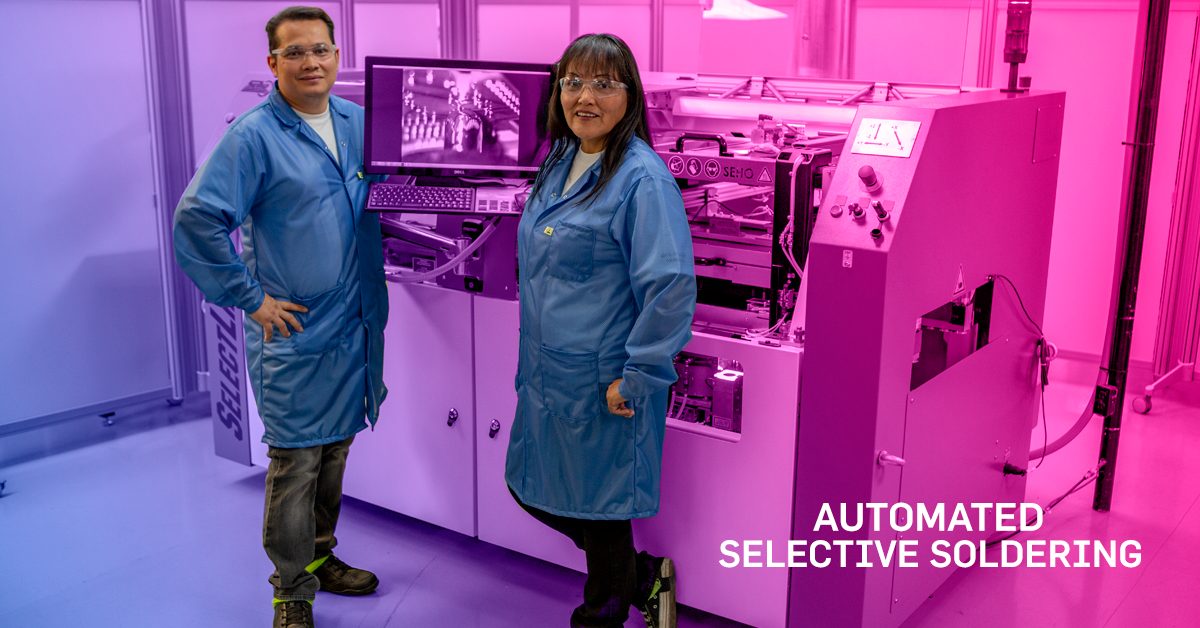When is automated through-hole soldering most effective for soldering components?

In PCB assembly, soldering through-hole components on a printed circuit board (PCB) that also contains surface-mount parts can be a common requirement. MJS Designs offers automated selective soldering to provide efficient and effective results on mixed-technology boards.
This type of soldering is particularly useful when traditional wave soldering cannot be implemented due to the complexity of the board design, or on higher-volume assemblies where hand soldering may not be efficient. The selective solder machine has preheat and spray flux areas to prepare the PCB for soldering, and has a nozzle that only flows solder on selected component leads. It is programmed to precisely solder only through-hole components and not the entire circuit board.
Automated selective soldering is an inherently flexible process that produces reliable solder joints without overheating components. These machines can be programmed to ensure solder joints meet the IPC industry Class 2 and Class 3 requirements. And some machines contain both leaded and lead-free solder pots. This versatility allows their use in a wide variety of projects.
Selective soldering consists of primarily three stages:
- Fluxing: Flux is applied to the PCBs to remove the layer of oxidized metal where the solder will be applied, and to seal out any remaining air to prevent reoxidation.
- Preheating: Once the flux has been applied, the PCB is preheated.
- Soldering: The variable and programmable solder nozzles apply solder through a fountain to the specific components on the board in a consistent stream.
The machines are individually programmed for each soldering point, to control flux volume and to set soldering time for each PCB assembly situation, ensuring a more reliable solder joint. The level of statistical process control for through-hole components is significantly improved when using selective soldering machines.
Selective soldering is a preferred solution for higher-volume through-hole assembly and for projects with tight spacing between through-hole components. The nozzles can reach between two through-hole leads without flooding the entire area with solder. When there is a dense concentration of through-hole leads, a wider solder nozzle will effectively handle the situation.
At MJS Designs, we have been assembling PCBs since 1976, and consistently stay up to date with new technologies within our industry to handle our customers’ project requirements. We are committed to high quality and accuracy in complex PCB design and assembly, electronic engineering design, CAD layout, box/system build, cable and wire harness assembly, procurement, prototyping, volume assembly, test development, testing and fulfillment.
